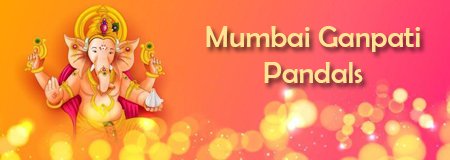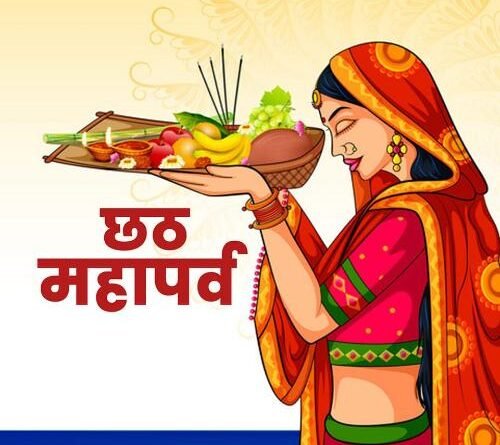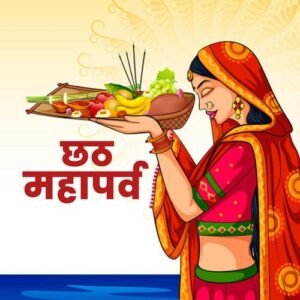Chhath festival
This four-day fast, observed immediately after Diwali on the new moon day of Kartik month, falls on Kartik Shukla Shashthi, the most difficult and important night. This is why the fast is named Chhath. Chhath festival is a corruption of Shashthi Tithi.
It is called Chhath because it is a Surya Shashthi fast. This festival is celebrated for family happiness and prosperity and to attain desired results.
Worship of Sun and Chhathi Maiya in Chhath festival:-
During Chhath Puja, the Sun God is worshipped and offered oblations. The Sun is a visible deity, the foundation of life for all living beings on Earth. Along with the Sun God, Chhathi Maiya is also worshipped during Chhath.
Surya and Chhathi Maiya have a brother-sister relationship. She is named Shashthi because she emerged from the sixth part of the original nature. She is also the wife of Kartikeya. Shashthi is also known as the goddess of the gods. According to mythology, Surya was the first to worship Shashthi.
Scientifically, a special astronomical change occurs on the day of Shashthi. The sun’s ultraviolet rays then converge in an unusual way, and to protect against their ill effects, the Chhath fast is observed by standing in water during the sunrise and sunset.
According to mythological belief, Chhathi Maiya or Shashthi Mata protects the children and gives them long life.
In the scriptures, Shashthi Devi is also described as the mental daughter of Lord Brahma. In the Puranas, she is also known as Maa Katyayani, who is worshipped on the sixth day of Navratri. Shashthi Devi is called Chhathi Maiya in the local language of Eastern Uttar Pradesh, Bihar and Jharkhand.
Chhath festival tradition: –
This festival lasts for four days. It begins on the third day of Bhaiya Dooj. On the first day, prasad consists of rock salt, ghee-cooked rice, and pumpkin curry. The fast begins the next day. Kheer is prepared at night on this day. Those observing the fast take this offering at night. On the third day (the first day for those who complete the Chhath fast in two days), they offer arghya (milk) to the setting sun. On the final day, they offer arghya (water offering) to the rising sun. Purity is observed during this puja; garlic and onions are prohibited. Devotional songs are sung in homes where this puja is performed. Some new customs have also emerged, such as the construction of a pandal and the installation of an idol of the Sun God. Furthermore, considerable expenditure is incurred on lighting, and after the morning offering of aarghya, organizers shout over microphones asking for offerings. Firecrackers are also lit. In some places, orchestras are also organized; milk, fruit, and incense sticks are also distributed. People gather together to clean the entire route in preparation for the puja.
Chhath fast :-
At the heart of the Chhath festival is the Chhath fast, a rigorous form of penance. It is typically observed by women, but some men also observe it. Women who observe the fast are also called Parvaitins.
During this four-day fast, the devotee must fast continuously. They renounce food and comfortable bedding. Devotees spend the night on the floor, covered in a blanket or sheet, in a room set up for the festival.
Participants wear new clothes. Women wear saris and men wear dhoti to perform Chhath. Once initiated, the Chhath festival is performed year after year until a married woman from the next generation is prepared to take on the role. The festival is not celebrated if someone in the family dies.
It is believed that women who observe the Chhath fast are blessed with a son. Women who desire a son and pray for their well-being typically observe this fast. However, men also observe this fast with full devotion.
Chhath Puja Method: –
Before Chhath Puja, collect the following materials and then offer arghya to Sun God as per the rituals.
1- Large bamboo basket, soup bowl made of bamboo or brass, plate, milk and glass.
2- Rice, red vermilion, lamp, coconut, turmeric, sugarcane, radish, vegetables and sweet potato.
3- Pear, big lemon (chakotra), honey, betel leaf, whole betel nut, caraway, camphor, sandalwood and sweets.
4- Take Thekua, Malpua, Kheer-Puri, Semolina Halwa, Laddus made of rice as Prasad.
Method of offering Arghya to the Sun:
Place the above ingredients in a bamboo basket. When offering prayers to the Sun, place all the offerings in a bowl and light a lamp in the bowl. Then, jump into the river and offer prayers to the Sun God.
First day bath and eat:
The first day, Kartik Shukla Chaturthi, is celebrated as “Nahay-Khaay.” First, the house is cleaned and purified. Afterward, the Chhath Vratis bathe and begin the fast by consuming pure vegetarian food prepared in a sacred manner. All members of the household eat only after the fasting person has eaten. The meal consists of pumpkin lentils and rice. This lentil is made from chickpeas.
Lohanda and Kharna on the second day:
On the second day, Kartik Shukla Panchami, devotees fast for the entire day and then eat their meal in the evening. This is called Kharna. Everyone in the neighborhood is invited to partake of the Kharna offerings. The offerings include rice pudding made with sugarcane juice, milk, rice flour, and ghee-coated rotis. Salt or sugar are not used during this ritual. Special attention is paid to the cleanliness of the entire house.
Evening offering on the third day:
On the third day, Kartik Shukla Shashthi, Chhath Prasad is prepared during the day. In addition to thekua/tikri, rice laddus, also known as laddua, are also offered as Prasad. Apart from this, the mould and fruits brought as offerings are also included as Chhath Prasad.
In the evening, after making all the preparations and arrangements, the arghya bowl is decorated in a bamboo basket and the fasting person along with his family and all the people of the neighbourhood proceed towards the ghat to offer arghya to the setting sun.
All Chhath devotees gather at a designated pond or riverbank to collectively perform the offering of water and milk. The Sun is offered water and milk, and Chhathi Maiya is worshipped with a bowl of prasad. For a few hours, a carnival-like atmosphere prevails.
Fourth day: Usha Arghya
On the fourth day, Kartik Shukla Saptami, the rising sun is offered arghya on the morning of Kartik Shukla Paksha. Those observing the fast reassemble at the same place where they offered arghya in the evening. The process is repeated from the previous evening. At the end, the fasting person completes the fast by drinking raw milk sherbet and eating some prasad.
Mythological significance of Chhath Puja: –
There are many mythological and folk tales prevalent which explain the tradition and importance of Chhath Puja.
Recognition of Ramayana: –
According to one belief, after conquering Lanka and establishing Ramrajya, Lord Rama and Mother Sita fasted and worshipped the Sun God on Kartik Shukla Shashthi. On Saptami, at sunrise, they performed another ritual and received blessings from the Sun God.
Recognition of Mahabharata: –
According to another belief, the Chhath festival originated during the Mahabharata period. Karna, the son of Surya, was the first to worship the Sun God. Karna was a great devotee of the Sun God. He stood waist-deep in water for hours each day, offering prayers to the Sun. It was through the Sun’s grace that he became a great warrior. This same ritual of offering prayers is still prevalent during Chhath.
Some stories also mention Draupadi, the wife of the Pandavas, worshipping the Sun. She regularly prayed to the Sun for the good health and long life of her family.
Recognition of Puranas: –
According to a legend, King Priyamvad had no children. Maharishi Kashyapa performed a Putrayeshti Yagna (a ritual for the birth of a child) and gave the kheer prepared for the yagna to his wife Malini. As a result, she conceived a son, but he was stillborn. Priyamvad took his son to the crematorium and started dying due to separation from his son. At that very moment, Devasena, the daughter of the Lord, appeared and said, “Because I was born from the sixth part of the basic nature of the universe, I am called Shashthi.”
O King, you should worship me and inspire others to do the same. The king, wishing for a son, observed a fast dedicated to Goddess Shashthi and was blessed with a son. This puja was performed on Kartik Shukla Shashthi.
Chhath song :-
On various occasions of the folk festival Chhath, such as while preparing the Prasad, at the time of Kharna, while going to offer Arghya, at the time of donating Arghya and while returning home from the ghat, many melodious and devotional folk songs are sung.
Song :-
kerava je pharela ghavad se, oh par suga medaraay
kaanch hee baans ke bahangiya, bahangee lachakat jaay
ug na suruj dev bhil aragh ke ber.
nindiya ke matal sooraj ankhiyo na khareede he.
chaar kona ke pokharava
ham karelee chhath baratiya se unakee laagee.
The song depicts a parrot hovering over a similar bunch of bananas. The parrot is threatened that if it pecks at the banana, it will be reported to the Sun God, who will not forgive it. Yet the parrot still makes the banana impure and incurs the Sun’s wrath. But what can his poor wife, Sugni, do now? How can she endure this separation? Neither the gods nor the Sun can help her, after all, she has destroyed the sanctity of the ritual.
Chhath Puja Arghya Mantra Time:-_
Om Surya Dev Namastestu Grihanam Karuna.
arghyan ch phalan sanyukt gandh malyakshatai yutam.
First Day:
October 25th – Nahay-Khaay👉 Saturday is the first day of Chhath Puja. Sunrise on this day occurred at 6:27 and sunset at 5:42 pm. This day marks the beginning of the Chhath Puja festival.
Second Day:
October 26 – Kharna 👉 Sunday is the second day of Chhath Puja. On this day, a fast is observed from sunrise to sunset, abstaining from both food and water. Sunrise on this day will be at 6:28 AM and sunset at 5:41 PM. At the end of the second day, prasad of kheer and roti is prepared. This is distributed to everyone in the family, including the fasting person. Water is also offered to the moon at night.
Third Day:
On the third day, October 27th, the first offering is made to the Sun God in the evening. A full-day fast is observed on this day as well. Sunset on this day will be at 5:40 pm. On the third day, before sunset, the first offering of Chhath Puja is made to the Sun God.
Fourth Day:
This is the final day of Chhath Puja. On the morning of Tuesday, October 28th, an offering will be made to the Sun God. This is the second offering of Chhath Puja, marking the end of the 36-hour long fast. Sunrise on this day will occur at 6:29 AM.
|| Jai Chhath Mata ||











